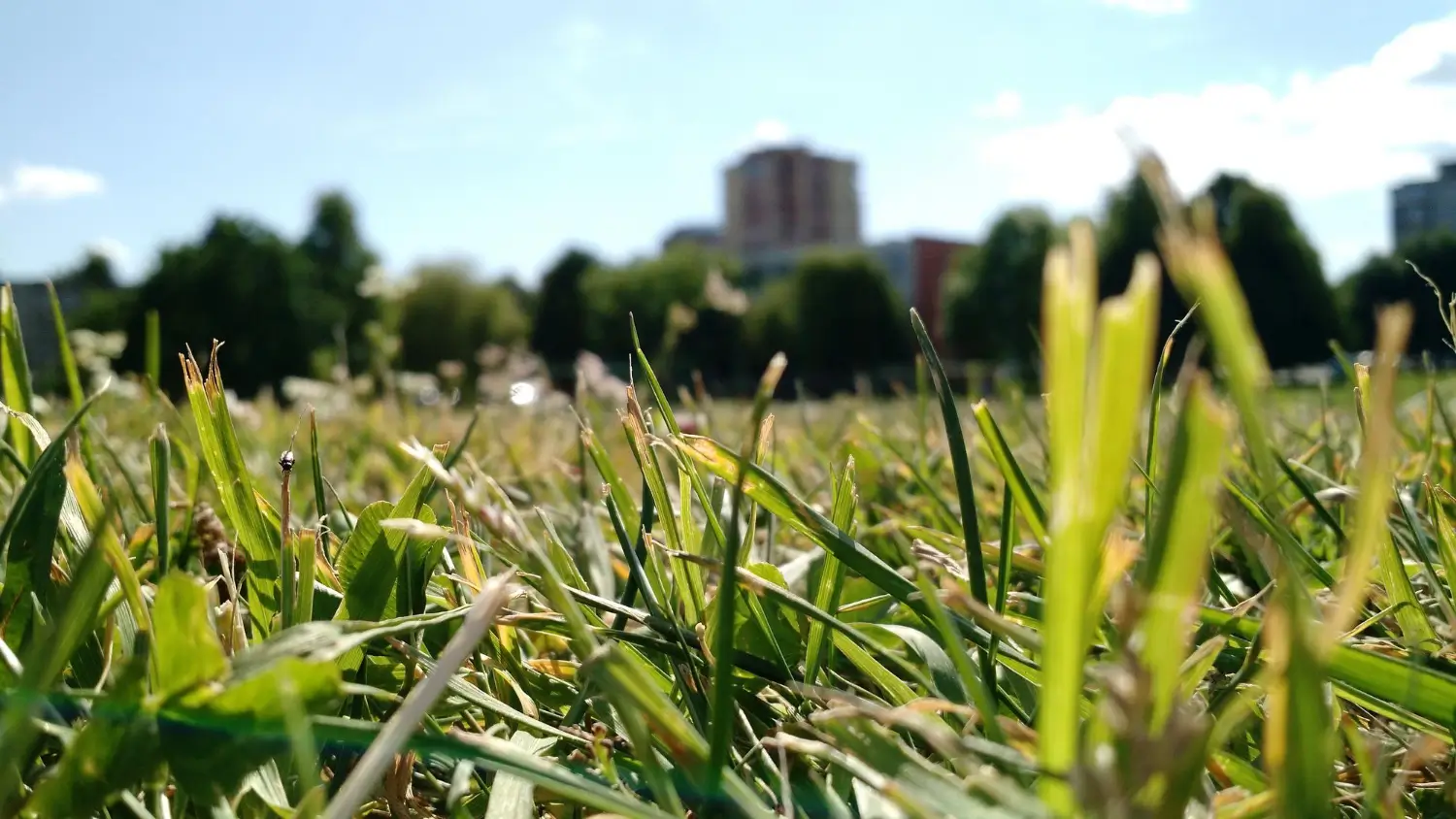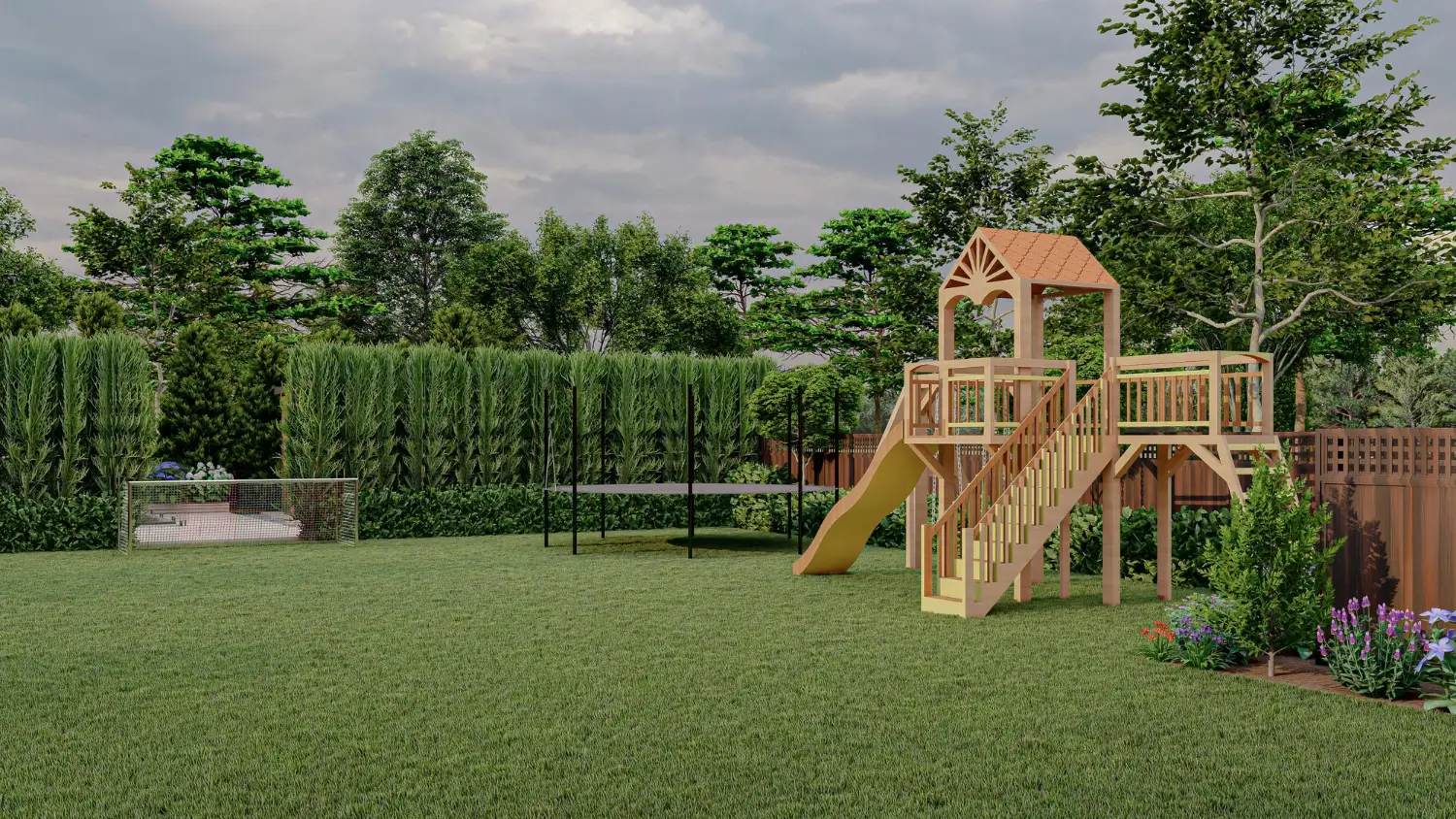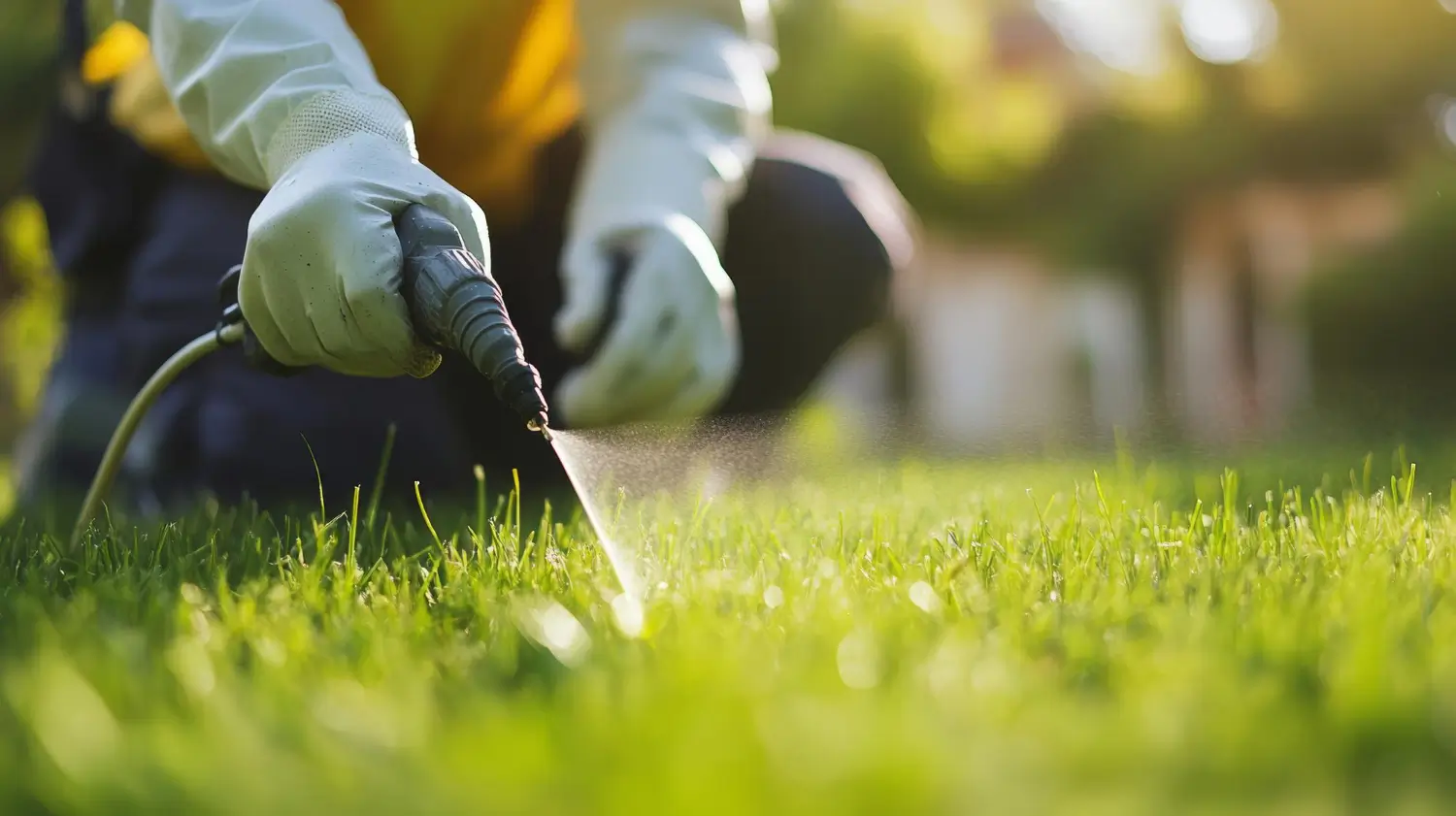
August 24, 2025

Grass seeds are necessary to establish a beautiful, lush, green, and resilient lawn. The right grass seed impacts how a lawn looks and how it stands up to weather conditions, different soil types, foot traffic, and pests. It also affects the lawn's long-term health and durability. Selecting and sowing grass seeds properly can create various benefits for grass health.
Farmers can use various grass seeds for a specific environment, including Kentucky bluegrass seeds. Kentucky bluegrass seed is one of the loveliest seeds for beautiful turfgrass. These seeds provide a stunning, dense lawn with a lush, dark green turf with a fine blade structure. This wholesome seed is ideal for parks, lawns, and sports grounds.
Growcycle offers the best grass seed for a beautiful lawn, including Kentucky bluegrass seed, to help farmers develop a vibrant and resilient lawn. The article will provide all the details about Kentucky bluegrass seed, including everything from seeding to maintenance for a durable and lush lawn.
What is Kentucky Bluegrass Seed?
Kentucky Bluegrass seeds refer to the seeds of Poa pratensis, a type of perennial grass popular for lawns, athletic fields, and golf courses, especially in temperate and cooler climates. It is an everlasting, cool-season grass seed belonging to the Poaceae family.
Known for its vibrant green color, dense growth, and smooth texture, Kentucky Bluegrass is a favorite in northern and transition zones because of its resilience and aesthetic appeal.
It grows fastest in the spring and fall and may develop in various organic and soil types. It thrives in rich, well-drained soils with a pH above five (6 and 7.5). It is one of the coldest-hardy grasses and thrives in humid climates with temperatures between 59 and 80°F.
Kentucky bluegrass seed proliferates and can withstand foot traffic and dryness. It requires routine care to be healthy and attractive, including fertilizer application, watering, and frequent mowing. However, it is susceptible to several common diseases that affect grass, including leaf spot and dollar spot.
Kentucky bluegrass is the most widely used grass seed throughout North Carolina. Here are its common characteristics:
There are several types of Kentucky Bluegrass seed varieties, each with unique characteristics tailored to different climates, soil types, and uses. Here are some common types of Kentucky Bluegrass seed:
Common Kentucky Bluegrass is the primary type often used in parks, pastures, and general lawns. It’s known for being resilient and adaptable, making it a good all-around choice. This type has a medium texture and requires moderate maintenance to stay healthy.
Midnight Kentucky Bluegrass stands out for its dark green color and fine texture. It grows densely and resists many diseases, making it ideal for high-traffic areas. Midnight looks beautiful but does need frequent watering and extra care to maintain its color and health.
America Kentucky Bluegrass has a fine texture and a dark green shade, similar to Midnight. It is known for adapting well to different soils and handling some droughts. This type is great for lawns needing high disease resistance and typically requires less care than Midnight.
Compact Kentucky Bluegrass grows in a shorter, dense pattern and is softer to the touch. Types like Blue Velvet offer a thick, plush look that doesn’t need as much mowing. It is perfect for ornamental lawns but doesn’t handle heavy foot traffic or other types.
Hybrid Kentucky Bluegrass is specially bred to be more tolerant of heat, drought, and diseases. Varieties like the Texas Hybrid do well in warmer climates and withstand high temperatures. This type is a good choice for areas where summers get hot.
Aggressive types, like HGT (Healthy Grass Technology), grow and spread quickly. They recover well from damage, which makes them ideal for athletic fields, playground turf, and other areas with heavy foot traffic. This type keeps lawns looking full and green even with regular use.
Shamrock Kentucky Bluegrass is known for its strong disease resistance and resilience. It’s a lighter green compared to other types, but it handles various conditions well. Shamrock is an easy-care option and works well in general-purpose lawns.

Playgrounds are an ideal place for turf installation, and durability and safety are key factors. Children could get injured if playground turf lacks proper cushioning, so safety is crucial when selecting turf for these areas.
LEARN MORE →Here are the benefits of Kentucky bluegrass seed to ensure a lush and resilient lawn:
When selecting the right Kentucky bluegrass seed for the lawn, it is essential to consider several key factors to promote healthy and appealing growth. Here are some important considerations to keep in mind:
Kentucky bluegrass seeds are classified as cool-season seeds, which means they thrive and reach optimal growth during the cooler winter months, contributing to a lush and resilient lawn.
In drought-prone regions, choosing varieties that exhibit drought resistance is crucial for adequate growth and sustainability. Choosing grass that fits the climate ensures its survival in different weather and temperatures.
Kentucky bluegrass seeds require adequate sunlight to work efficiently. However, some forms of Kentucky bluegrass can tolerate shade. Therefore, farmers must read the grass seed manual to determine their sunlight requirements.
Another important factor in seed selection is the primary use of the lawn. Different lawns have different needs; for example, high-traffic areas such as family yards or sports fields benefit from durable, self-repairing grass types.
Kentucky bluegrass is prone to diseases such as:
However, some forms of Kentucky bluegrass, like Julia and Award, are highly resistant to diseases. Therefore, farmers must select disease-resistant bluegrass seeds, particularly in areas with high humidity.
When selecting seeds, finding a balance between cost and quality is essential. Premium Kentucky bluegrass seeds generally yield better outcomes and reduce weed growth. Investing in high-quality seeds can lead to a more robust and easier-to-maintain lawn. Nonetheless, lower-cost seeds can still be worthwhile if they meet industry standards.
Choosing premium grass seeds is the initial step to creating an attractive lawn. Here are some of the best Kentucky bluegrass seed options:
Navy Kentucky Bluegrass Seed is a good choice for anyone who wants a beautiful lawn. Known for its deep color and soft, inviting texture, this high-quality blend is perfect for establishing a yard that homeowners can enjoy. It covers large areas, making it ideal for starting fresh or giving the existing lawn a little love.
Navy Kentucky Bluegrass is tough enough to handle different climates and soil types, ensuring the lawn looks vibrant and healthy. With this seed, gardeners and homeowners can plant grass to make an outdoor space where they can make lasting memories.
Pennington Smart Seed Kentucky Bluegrass Blend is designed to create an exceptionally thick, vibrant lawn that will surely attract the lawn beauty. This premium blend features a selection of high-quality Kentucky bluegrass seeds known for their deep green color and density.
The grass is precisely created to thrive in various environmental conditions. It exhibits remarkable tolerance against common lawn diseases and heavy foot traffic, making it perfect for families and active outdoor spaces.
Additionally, this blend incorporates an optimal amount of fertilizer, which supports strong root development and boosts the overall growth of the grass. So, with Pennington Smart Seed, gardeners can get the lawn of their dreams.
Kentucky bluegrass seed takes longer to germinate, and as the lawn slowly fills in, extra work will be needed to prepare the soil and manually remove weeds. Here are some steps a farmer can follow to plant Kentucky bluegrass seed on the lawn.
The first step to growing Kentucky bluegrass seed is preparing the soil. Remove any debris or weeds from the area. Then, using a tiller or garden fork, loosen the soil to a depth of at least six inches. This will make loose and well-drained soil for growing Kentucky Bluegrass.
Moreover, before sowing Kentucky bluegrass seeds or sod, always check the pH and nutritional levels of the soil. If required, make adjustments to bring the pH down to 6.0–7.0. After preparing the soil, add some organic matter, like compost or manure, to boost its quality.
Once the soil is ready, the next step is to plant or sow the seed. Kentucky bluegrass seeds can take up to two to three weeks to germinate fully. Gardeners can use a hand-held broadcast spreader to spread seeds on small areas like lawns.
First, calibrate the spreader, then divide the seeds into two measures. Now, spread seeds by walking parallelly in an east-west direction. After spreading the seeds, gently water them to prevent them from washing out.
The optimum time to plant Kentucky bluegrass seed is September, and spring is the second best period. Seeding in the spring is often preferable since temperature and moisture conditions are more favorable for germination and emergence. However, spring seedlings have a long period to form tillers before the essential fall temperature induction phase.
Harvesting Kentucky bluegrass starts until the seed heads are fully mature, usually in late summer. The seeds are fully developed and dry enough to harvest at this stage. A farmer uses a combine harvester to cut the grass and collect the seed heads. Timing is important to avoid losing seeds that might fall off too early.
Once harvested, the seeds need to be dried to reduce moisture, which can be done by spreading them out in a dry area or using drying equipment. After drying, the seeds are cleaned to remove any stems, trash, or other debris, making them easier to store and ready for planting.
The cleaned seeds are stored in a cool, dry place until they’re needed for future planting or sale. This careful process ensures high-quality Kentucky bluegrass seeds for lawns and fields.
Burning Kentucky bluegrass seed fields is vital for proper sanitation and boosting seed production. The optimal time to burn is right after mixing the seed crop. A good chopper and spreader on the combine helps to avoid concentrations or hot spots when burning.
After planting Kentucky bluegrass and establishing the lawn, follow these basic lawn care practices to keep it lush and green.
The best time to mow Kentucky bluegrass is when it turns dry. During the spring and fall seasons, always use the one-third mowing guideline and mow to a height of two and a half to three inches. However, allow the grass to grow three and a half inches longer in the summer. That way, the turfgrass crowns will be better shaded and survive the heat.
In the spring and fall, Kentucky bluegrass stays typically lush and green with one to one and a half inches of water each week from rain and irrigation. Deep and infrequent watering encourages deep root growth, which helps the grass survive droughts and heat. Kentucky bluegrass can go dormant in the hot summer and turn brown if not adequately hydrated.
The amount of fertilizer used on Kentucky bluegrass lawns determines their color and durability. With less fertilizer, the grass is more prone to wear and strain and will become brown over the summer.
For the greenest lawn that can withstand foot activity, apply three to five pounds of nitrogen per 1,000 feet of lawn each year. Farmers can use Dr. Earth Nitrogen Lawn and Garden food to fertilize the Kentucky bluegrass seed.
Thatch is the buildup of organic material between soil and grass blades. A half-inch layer of thatch can help preserve grass roots and soil by trapping moisture and acting as insulation against harsh weather.
Too much thatch can prevent nutrients, water, and air from reaching the soil and grass roots. Routine inspection and mild dethatching improve water penetration and air circulation while maintaining a balanced atmosphere.
Protecting the new grass from severe weather during its first season is vital. Ensure the lawn receives enough water throughout the hot summer months to prevent the soil from drying out. Maintain a regular watering regimen throughout the autumn, but reduce it as the temperature cools.
The best time to plant Kentucky bluegrass to cover bare or sparse areas is in the autumn. Avoid heavy foot traffic before winter to prevent soil compaction and damage to the recently planted grass.
When planting Kentucky bluegrass seed, avoiding common mistakes can help ensure a healthy and beautiful lawn. Here are some mistakes to watch out for:

Frequent watering and mowing aren't enough to provide that vibrant appearance. This is where Starter Fertilizers play an important role in creating beautiful green lawns. These vital nutrients provide young plants the push they need to develop strong roots and healthy development.
LEARN MORE →One major disadvantage is its high maintenance requirement. Moreover, it has poor shade and drought tolerance and less resistance to diseases like leaf spots.
Kentucky bluegrass thrives best in humid environments. The ideal temperature range for forage production is between 60°F and 90°F. Although the grass is dormant in dry or scorching weather, it can withstand droughts.
The best height for Kentucky bluegrass is between 3 and 3.5 inches in the summer and between 2.5 and 3 inches in the spring. Keeping the grass at this height provides extra leaf area, which helps cool the plant's crowns during hot summer days.
Choosing the right grass seed is important for anyone starting or maintaining a lawn. The right seed helps grass grow well in different climates and soil types, leading to a healthy lawn. Kentucky bluegrass seed can be very effective if used correctly and combined with proper lawn care.
Homeowners and gardeners can create a thick and green lawn by using high quality Kentucky bluegrass seeds and understanding what their soil and lawn need. With the right application methods and dedication, homeowners can achieve a beautiful, long-lasting lawn. Growcycle offers high-quality, fast growing grass seeds, like Kentucky, and guides to help homeowners plant seeds effectively for a healthy green lawn.
Disclaimer: This material is for informational purposes only and should not be relied on for legal, medical, financial, or any other form of professional advice.